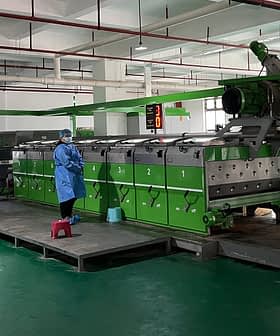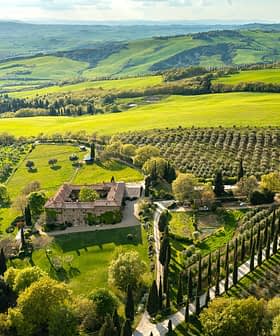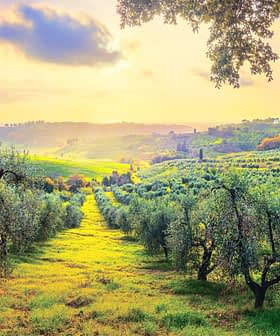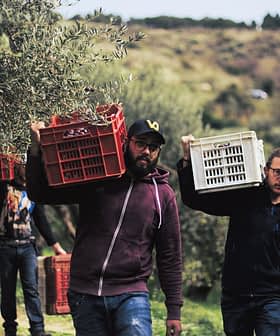Report Reveals Growing Number of Olive Producers in Northern Italy
Olive farming is shifting north in Italy as sustainability in a changing climate guides new ventures. Organic growing is also on the rise.
 Vineyards in Piedmont, Italy. The number of olive growers in Piedmont has tripled since 2010.
Vineyards in Piedmont, Italy. The number of olive growers in Piedmont has tripled since 2010. Ismea’s annual report on the olive oil industry in Italy showed a significant increase in the number of olive oil companies in northern regions such as Piedmont and Lombardy, while the central and southern regions experienced a decrease. The report also highlighted a steady growth of organic production at a national level, with Puglia being the region with the largest share of organic-certified olive oil production in the country.
The Italian Institute of Services for the Agricultural and Food Market (Ismea) published its annual report on the olive oil industry, revealing an increase in the number of olive oil companies in northern Italy and a steady growth of organic production at a national level.
From 2010 to 2020, the largest increase (202 percent) of olive oil companies was registered in Piedmont, where the number of businesses tripled from 641 to 1,939.
It has become clear that due to climate change, production is increasing in the north over the medium-long term, notwithstanding that the majority of Italian output still comes from the other areas of the country.
This was followed by Lombardy, where the figure more than doubled (132 percent) from 1,939 to 4.506. Friuli-Venezia Giulia, Valle d’Aosta, Trentino-Alto Adige and Emilia-Romagna saw increases of 61 percent, 51 percent, 25 percent and 12 percent, respectively.
During that period, however, the number of olive oil companies in the central and southern regions decreased by 31 percent, amounting to 619,378 in 2020, when the Italian National Institute of Statistics (ISTAT) conducted the latest agricultural census.
See Also:Italian Carbon Credit Supplier Receives International AccreditationOn the other hand, the surface dedicated to olive cultivation in Italy has not changed significantly in recent years, amounting to 1,135,837 hectares in 2023. Still, the regions of Piedmont, Liguria, Sicily and Veneto have seen the largest increases, namely 16 percent, 13 percent, 10 percent and 7 percent, respectively.
“It has become clear that due to climate change, production is increasing in the north over the medium-long term, notwithstanding that the majority of Italian output still comes from the other areas of the country,” Tiziana Sarnari, Ismea’s market analyst and report editor, told Olive Oil Times.
“It is not a major change, but there are some shifts that allow us to think that olive growing can find new spaces of development in the northern regions, too,” she added.
The report also says that the area dedicated to organic-certified olive farming in Italy is increasing.
Significant growth occurred from 2013 to 2018, and then a slower but steady expansion led the country’s organic olive surface to 272,000 hectares in 2022. Puglia accounts for 30 percent of this figure, closely followed by Calabria (28 percent), Sicily (15 percent), Tuscany (eight percent), Lazio and Campania (four percent).
The organic area represents 24 percent of the country’s total surface dedicated to olive oil production, while organic-certified extra virgin olive oils account for 15 percent of the country’s total olive oil production.
Most of the organic-certified production comes from the southern regions. In particular, between 2019 and 2022, on average, Puglia accounted for almost half (46 percent) of the Italian organic extra virgin olive oils, followed by Calabria (30 percent) and Sicily (12 percent).
Smaller percentages came from Tuscany (four percent) and Lazio (two percent), followed by Campania and the other central and southern regions (one percent each).
“The south remains the area with the largest production of organic extra virgin olive oils, both because it accounts for most of the national olive oil production and also for climatic reasons,” Sarnari said.
“In general, we are seeing greater attention from farmers towards a more sustainable agronomic management and an increased awareness about this aspect among consumers,” she added.
Share this article









